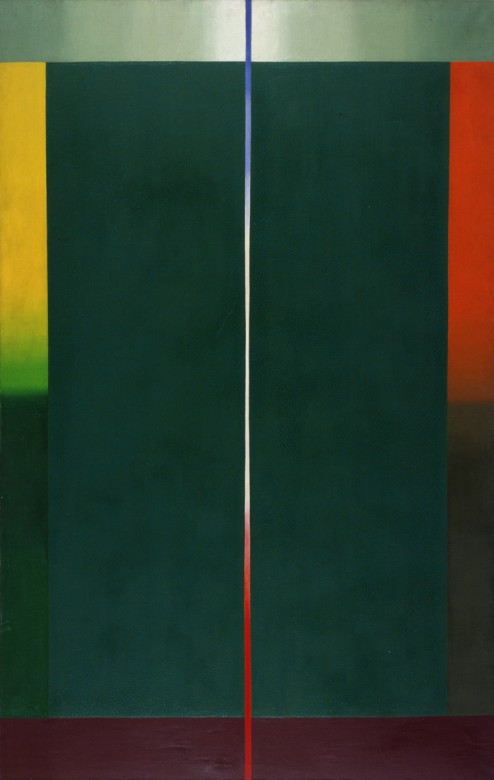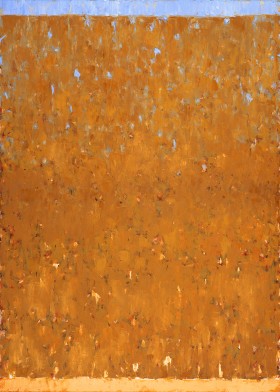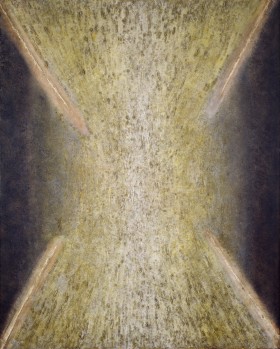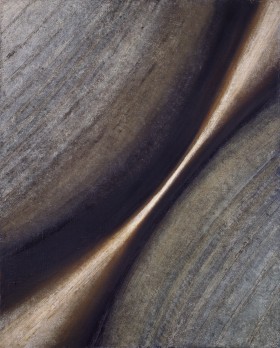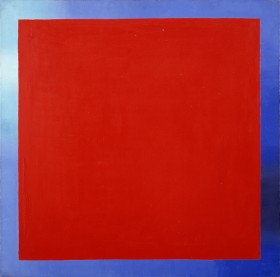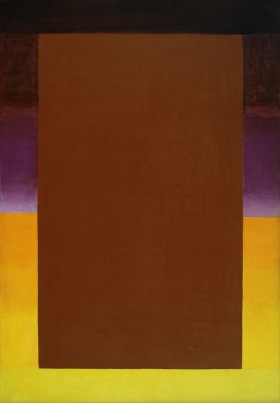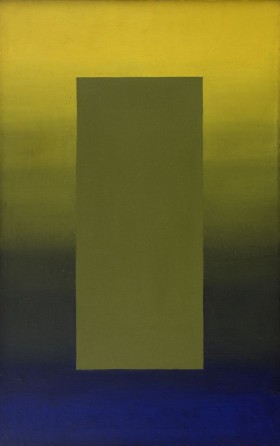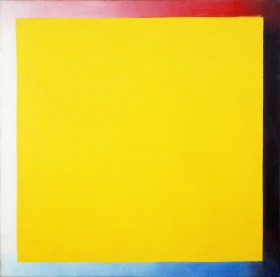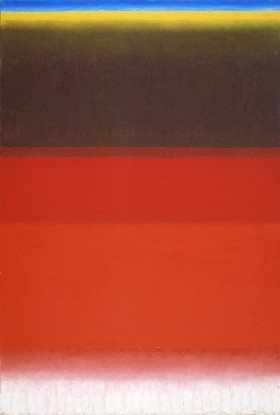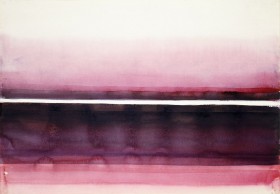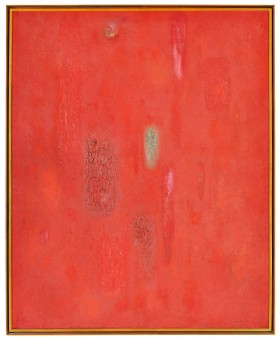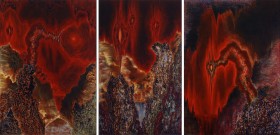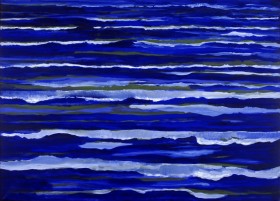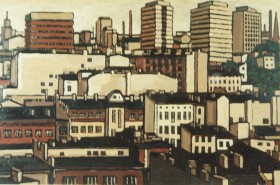Painting CCCXXIII
- type of object: painting
- date: 1974
- material/technique: oil on canvas
- dimensions: 240 x 153 cm
- inventory No.: M-111
- image licensed under: CC BY-SA
Since 1955, Stefan Gierowski painted genre scenes observed in life (The Pigeon Coop, Scrap Iron Pile). Houses, people, and animals were represented in the paintings using symbols of a simplified, but objective stile. In the background, symmetrically arranged planes caught the eye, testifying to the pursuit of structural discipline. In 1957, Gierowski eliminated references to the outside world from his paintings and created a characteristic abstract style. At the same time, he ceased to give his pictures literary titles, substituting the word ‘Painting’ and consecutive Roman numerals. He created nearly monochromatic works with a surface texture developed to varying degrees, whose main content was the interaction of colours creating the mood. In 1959–1960, Gierowski simplified his painting means by limiting the colour and texture effects. This was an intermediate stage leading to explorations on the boundary of optics and kinetics. Paintings from the 1960s depict dynamic spatial arrangements of bands painted with dark colours in various values. In the case of Painting CLXXXIII, flowing through the surface of the canvas is a beam of light in the shape of an hourglass, crossing beyond its edges. Artist and art critic Jerzy Stajuda wrote: ‘It’s about something more, it’s about these paintings growing in all directions, the expansion in space, the transgression of the frame. . . . The contradiction between the apparent static nature of the structure and its dynamic developmental possibilities, or to trivialise perhaps, between the ‘painterliness’ of the picture and its ‘architectural’ consequences, is what characterises Gierowski’s recent works’.
Ewa Skolimowska, translated by Paulina Bożek
